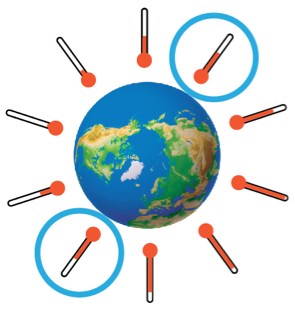A zillion and one thing to discuss
by Burkard Polster and Marty Ross
The Age, 18 June 2012

The new draft of the Senior Australian Curriculum is out, ready for public comment. Given that we gave the F-10 Australian Curriculum so, so much attention, and since we recently took a whack at VCE's Mathematical Methods, a few readers have suggested we now review the proposed national version. Dear Lord, do we have to?
There simply isn't anything fun to say about the national version of Methods. There's not much that can be regarded as fun within the subject, and it's not even fun to make fun of it. The subject is just a grey, pseudo-useful continuation of the grey, pseudo-useful ho-hum that precedes it.
Much of our review of VCE Methods applies verbatim to the Australian Curriculum. So, please just take our VCE review and move one step forward (the inclusion of the binomial formula). Then, take three steps back (everything else). There's not much else to say.
Oh yes, there's the statistics: the new Methods subject has a lot of stats. We suspect that the Australian Bureau of Statistics is an official sponsor. Just as football has the NAB Cup and horseracing has the Emirates Melbourne Cup, it seems that mathematics now has the ABS Curriculum.
And we're so pleased to have the ABS Curriculum. True, all that stats takes precious time away from the more fundamental subjects of algebra and probability and calculus. And true, a solid grounding in algebra and probability and calculus is in particular required for a coherent subject in statistics. But we're just so lucky to have all that really, really useful stats.
Seriously, it's an important topic, but God there's a lot of stats.
But enough of that. We want to talk about something fun: "zillions".
"Zillions" is one of our favourite words. Sometimes we use it, as others do, simply to mean "bloody big". However, we often use "zillions" to mean " infinitely many", or as a stage along the process of something becoming "infinitely large".
Whatever all that means. Our use of "zillions" is meant to indicate the presence of subtle ideas that are difficult to give their due attention. Though of course a student of mathematics must at some point study these ideas in proper depth. But when?
The mathematics of such processes, of quantities becoming infinitely large, or infinitesimally small, is known as the theory of limits. It is fundamental to calculus, and statistics, and essentially all of modern mathematics. For example, the number e (which the Australian Curriculum erroneously refers to as "Euler's number") is precisely defined as a limit.
One way to get some sense of limits is through the companion notion of continuity. Intuitively, a continuous process refers to one that cannot jump abruptly. An example would be the temperature at different points in a room; it may be 18 degrees near the heater and 15 degrees near the window, but there won't be a region in the room where the temperature jumps instantaneously from 18 to 15. This implies, for instance, that as we walk from the heater to the window we'll pass through all intermediary temperatures.
Continuity is not a difficult notion to grasp but the consequences can be surprising and fun. One of our earliest columns applied continuity to the problem of balancing a wobbly table. For another example, let's consider the temperature at all points on the Earth's surface at some fixed moment in time, say noon (Melbourne time) today. Then, at noon, there must be two spots on directly opposite sides of the Earth that are at exactly the same temperature. We'll leave that puzzle for you to ponder.

Though the intuition of limits and continuity is not too difficult, the precise definitions and consequent theorems are not easy. It is predominantly university-level material. Unfortunately, many university subjects that should cover this material do so very poorly. (Regrettably, more than a few lecturers of these subjects have not themselves undertaken a proper study of the material.)
What about at school? It's simply the nature of a school curriculum that it will deal with mathematical concepts that cannot be fully explained at the time. Limits and continuity are definitely in that category. Arguably all that can be done, but what definitely should be done, is to give a good intuitive sense of the notions.
Of course, there are better and worse ways to introduce such difficult material. Unfortunately, VCE Methods is not one of the better ways, tending to pedantry and pointlessness.
But now we have the new ABS Curriculum, and there's the opportunity for some improvement. Well, it's different: in the national version of Methods, limits and continuity have been all but eliminated.
Needless to say, we're disappointed. However, we can see the upside: dispensing with limits and continuity frees up lots of time for everyone to do more stats.
Puzzle to Ponder: Solve our temperature puzzle above: explain why at any time there will always be two opposite points of the Earth at exactly the same temperature.
Burkard Polster teaches mathematics at Monash and is the university's resident mathemagician, mathematical juggler, origami expert, bubble-master, shoelace charmer, and Count von Count impersonator.
Marty Ross is a mathematical nomad. His hobby is smashing calculators with a hammer.
Copyright 2004-∞ ![]() All rights reserved.
All rights reserved.